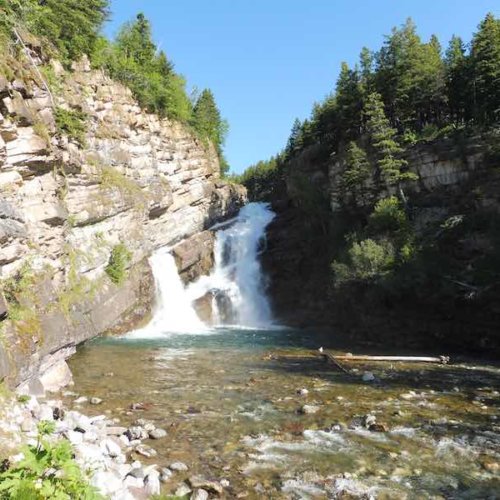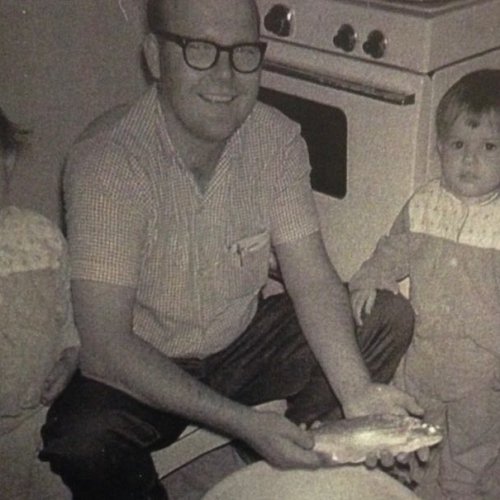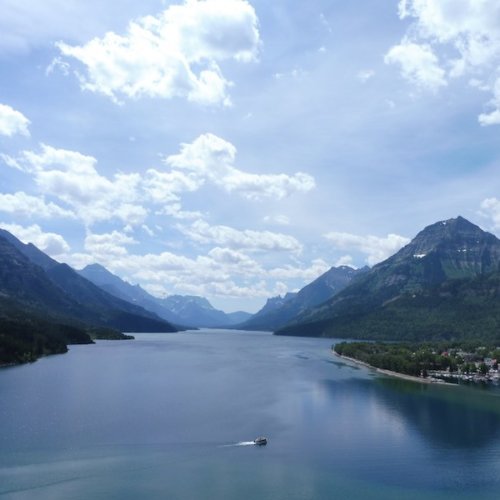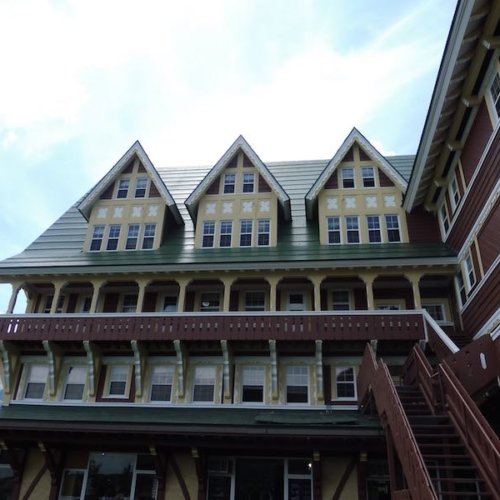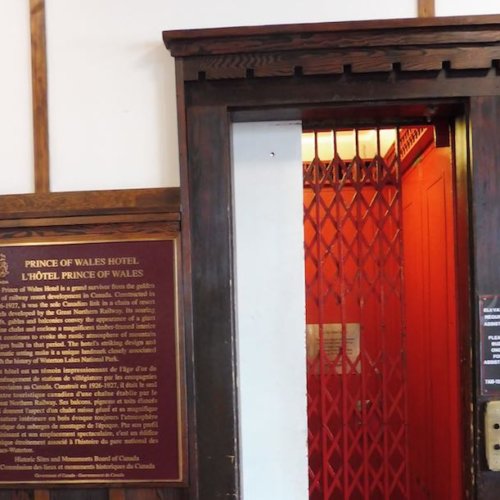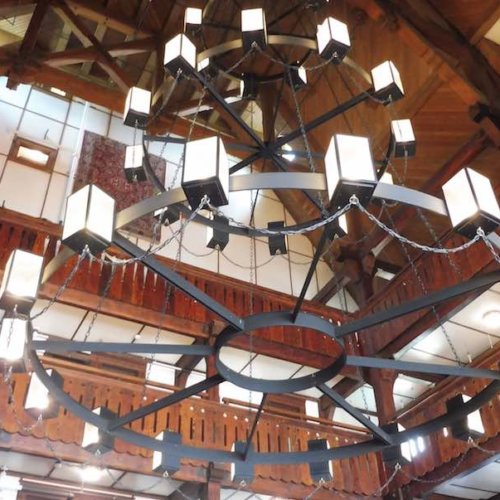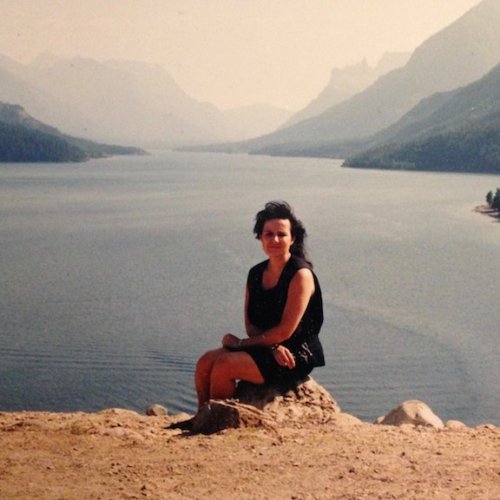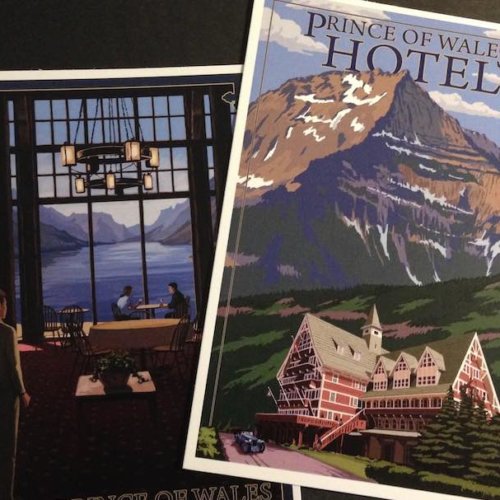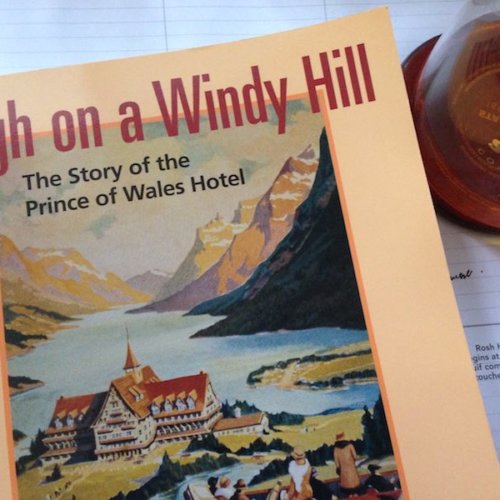“That an American railway company would put up a single hotel in a Canadian national park is one of many unique facts about the Prince of Wales Hotel”
(Ray Djuff, “High on a Windy Hill, The Story of the Prince of Wales Hotel”, 1999)
There is always a reason why one would choose to research, reflect and write on a particular topic and that stands true as I write today about the Prince of Wales Hotel. It’s been in the forefront of my thoughts as I watch the news on the Kenow Fire that has been threatening the town of Waterton for the past week. Again, I have been reminded of the potential loss of historic resources from fire, or any natural disaster, and in that the reminder of our personal experiences and stories with buildings and places that become a part of our individual character.
My Story as it Connects to the Prince of Wales Hotel
Growing up, I didn’t necessarily view the Prince of Wales hotel with the historic value that I do today. I did however; experience the beauty, quaintness and character of Waterton’s town site and Prince of Wales Hotel enough times over the years and, further in my reading, for it to now be more than a beautiful building but one of significant historic value to me.
Being from Medicine Hat, our family camping vacations were always in southern Alberta or Montana, which led us often to the Cypress Hills Provincial Parks or Waterton Lakes National Park (the world’s first international peace park with Glacier National Park, dedicated in 1932 and became a World Heritage Site in 1995). Staying in a tent or a cottage, we roamed the landscape, fished, and took in whatever a small resort town had to offer to our vacation experience.
I have fond memories of our Waterton trips and a scar on my knee to remind me of those childhood memories. I reflect on the quaint cottages we stayed in, fishing with my dad – cleaning those fish in our cottage, and enjoying the beautiful Cameron Falls in the evenings. Cameron Falls are one of the many natural highlights right in the town site and a most photographed landmark by many. As a child, Cameron Falls mesmerized me with its beauty. So much so that one of those evenings I decided to stay back a few minutes longer while my family strolled back to the cottage. Upon having had my fill of its crystal clear rolling waters over the mountain, I ran across the gravel road to catch-up with everyone only to wipe out and end up with a deep cut in my knee. It did get nicely fixed up back at the cottage however, it left a scar that surprisingly is now a valued memory of our family time at the cottage, evening viewings of Cameron Falls and what became a long-lasting connection to Waterton. That connection has brought me back many times to the place that has become my favourite national park and as a heritage conservationist, my favourite historic hotel. Sadly, the cottages are no longer there but Cameron Falls and the Prince of Wales Hotel are and they continue to be two visits I experience, photograph, learn more about and value that much more each trip.
Prince Of Wales Hotel Fire Threat
Watching the Kenow Fire move in on Waterton this past week was unsettling to say the least. I can’t image how the people, who have built, lived and continue to share the built and natural beauty of the resort town must have felt. Like me, I am sure they are breathing a sigh of relief and have much gratitude today at knowing the first responders and fire departments worked tirelessly to ensure that the town site and Prince of Wales Hotel history has been once again preserved. It’s not the first threat of forest fires, floods and hurricane-force winds at the town sites doorstep. “The resolve of railway officials to keep the Prince of Wales Hotel was tested in August 1935 during one of the worst forest fires in Waterton’s history … The hotel, with its own water system and exterior rooftop sprinklers, was thoroughly soaked as a precaution against wind-born embers” (High on a Windy Hill, Djuff). This past week’s news shared the exact same story from 82 years earlier. At that time, the winds shifted and temperatures cooled which proved to be the saving grace for the hotel. This time the same effort to water it down, fight the on-coming fire and then a little rain and cooler temperatures appear to have been its saving grace once again.
It was this past week’s fire that took me down memory lane and has me reflecting again on the historic value of the Prince of Wales Hotel and its stories. It’s commendable that the steps taken to preserve the hotel will reinforce the value of this National Historic Site, for not solely heritage conservationists like myself and those who are personally connected to it, but to others who may not yet realize the value of historic buildings if they don’t have that same connection to a particular one. The energy and resources to save the hotel reflects a highly visible commitment to its value and I know there are many, like me, that would have been feeling and reflecting on this landmark structure that has many stories yet to share. The Calgary Herald article’s title and word usage “Calgary firefighters guard landmark hotel in Waterton” and the resources they put towards doing just that tells a remarkable story of the historic value of such buildings.
The Unique Prince of Wales Story
It has become my tradition to buy historic books of a building or a place when visiting them to learn the “people stories” that built them. On one of my visits to Waterton about ten years ago, I purchased the book “High on a Windy Hill” by Ray Djuff. This book is the most interesting and detailed history book of the “construction” of a structure that I have read. From what I learned from the authors’ writings, the word “construction” for this building is far more than “people erecting a building”.
The author spent 20 years of research to bring to me the unique stories of the building of the Prince of Wales Hotel that I would never have known otherwise. The hotel has a story far beyond its architectural style of a rustic design tradition, with peaked roofs, gables, balconies and a timber-frame interior that give it an appearance of a giant alpine chalet. It has a story of its purpose; people who envisioned it, valued it, worked and stayed in it; the challenges, successes and failures in building, sustaining and preserving it; and yes, ultimately its architectural beauty. Experiencing the stature of the Prince of Wales Hotel as its sits on a magnificent hill overlooking an even more magnificent lake and mountain view is memorable in and of itself. Yet, when you learn about all the people and stories behind the why, what, when and how the hotel was built and has evolved over the years you can’t help but value it that much more as you walk through it or admire it as it sits atop a windy hill overlooking a beautiful blue green lake and town site below.
“The Prince of Wales Hotel is an impressive site, even from a distance. This one-of-a-kind structure, perched on a hill overlooking the Waterton Valley, fits into its setting in a remarkable way. The hotel appears dwarfed by the rugged mountains. Yet close at hand, the hotel is massive with its many gables, steep roof and Swiss-style balconies. It beckons visitors and once inside casts its own spell of wonder.”
(Ray Djuff, “High on a Windy Hill, The Story of the Prince of Wales Hotel”, 1999)
I am grateful for those 20 years of research that Ray Djuff did to share the history of a truly grandeur hotel such that experiencing it is that much more enriching each time I visit it. As is the case for me with historic buildings, my appreciation of them comes from the feelings I am l left with when experiencing them. I feel connected to its history, inspired, creative, at home, and excited when I wander through the Prince of Wales Hotel and its grounds – this being the case no matter how often I visit it.
Rich in detail, the book is written as a story and in it you get to know the characters and their thinking, as well, the significant challenges of weather, events and happenings of building the hotel, and all the years that have sustained the hotel’s 90-year history including sketches and substantial discussions on an expansion right after it opened but didn’t take place. The Prince of Wales hotel opened at noon on Monday, July 25, 1927 therefore, celebrating 90 years of stories this year. The years of stories and my personal memories raised the bar for me on the historic value of the hotel after this week’s fire and evacuation event for Waterton’s town site and the hotel.
If you already have a personal connection, as I do, or would like to better experience the Prince of Wales Hotel for its heritage value beyond its visible beauty then I would encourage you to read “High on a Windy Hill – The Story of the Prince of Wales Hotel” by Ray Djuff. The stories are many and interesting to read. I think you will come away with a new appreciation for the historic value of the hotel by connecting with the people and events over the past 90 years in a manner that solidifies the true impact of the potential loss it would have been this past week if the Prince of Wales had not been preserved with the extra care and resources that it has been.
“No work of history is cast in stone or, in the case of the Prince of Wales Hotel, wood. As long as the building remains standing, its story will continue to unfold.”
(Ray Djuff, “High on a Windy Hill, The Story of the Prince of Wales Hotel”, 1999)
Also, you can find the National Historic Site Statement of Significance for the Prince of Wales site here.

